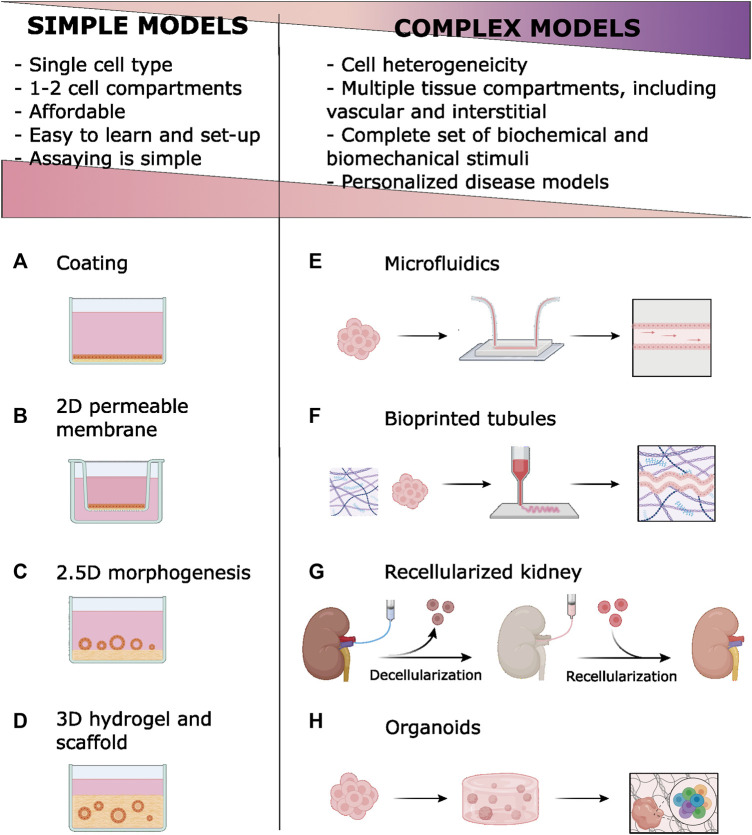FIGURE 1.
Simple models in vitro of renal epithelia employ ECM components of basal membrane (BM) and extracellular matrix (ECM) Coatings are simply ECM materials, usually collagen, adsorbed to the plastic (A) or permeable membrane (B). Permeable membranes and scaffold-based models improve epithelial polarity by offering two fluid compartments. Tubulogenesis is stimulated by growing renal epithelial cells onto (C) or within (D) hydrogels. New technologies [microfluidics (E), bioprinting (F), ECM decellularization (G) and organoids development (H)] enable complex models that introduce cell heterogeneity, vascular and interstitial compartments, and biomechanical stimuli. Compared to simpler, conventional models, these models have disadvantages related to their complexity. However, complex models allow for more faithful modeling of kidney function and disease. A licensed version of BioRender was used to prepare this figure.

